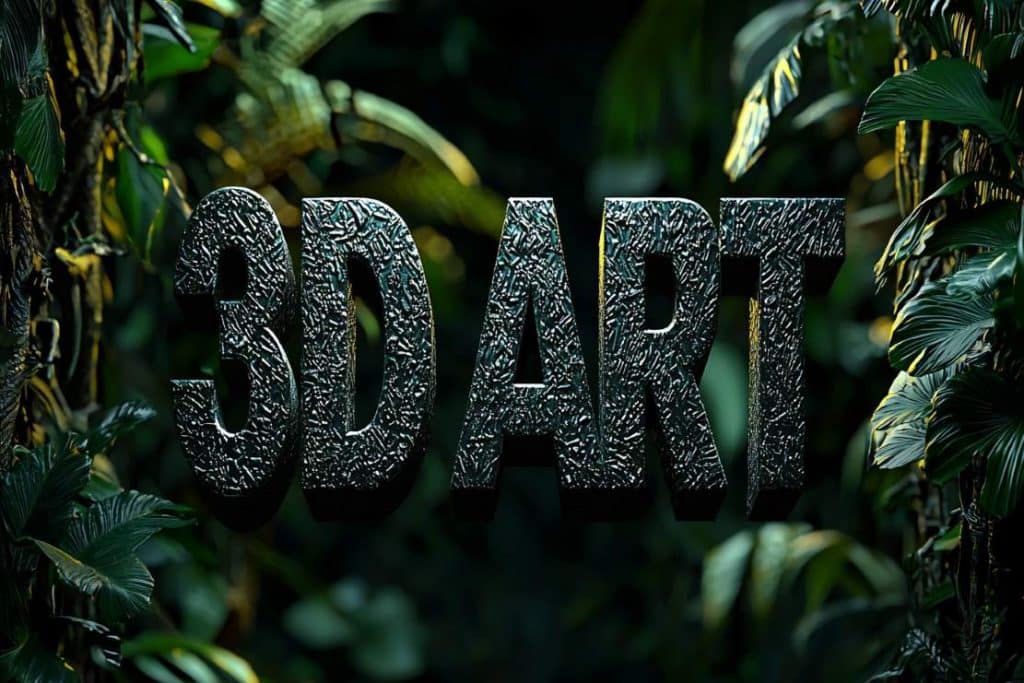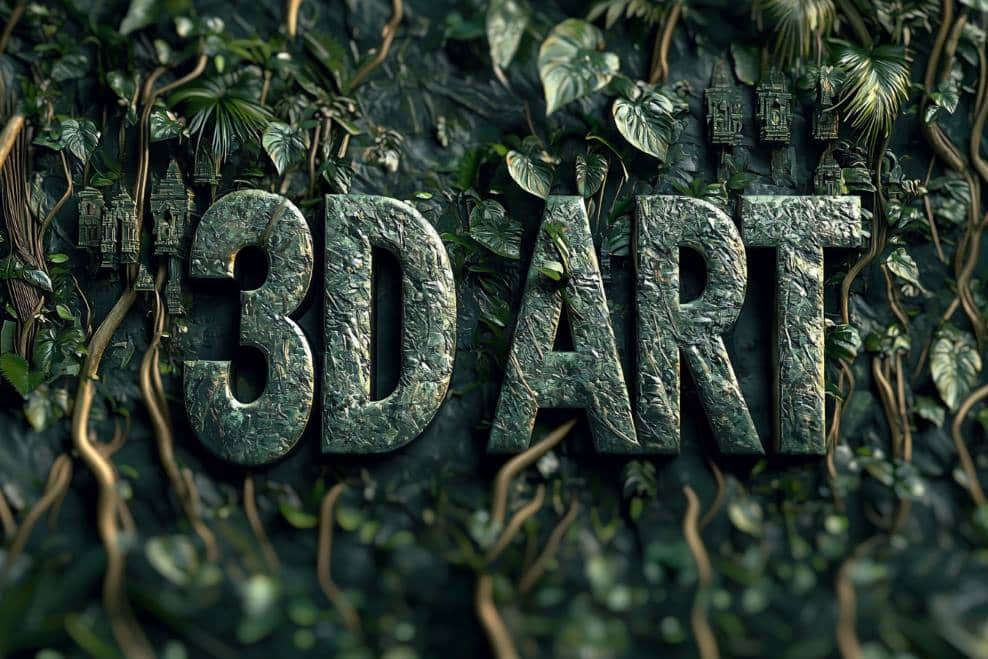Why Brands Are Betting Big on 3D Art for Product Visualization and Marketing

Transform Your Marketing with Custom 3D Art & 3D Artists
Hey there! Let’s talk about something we’ve all felt but maybe haven’t put into words yet. You know that moment when you’re scrolling through your phone, and suddenly… bam. An ad stops you dead in your tracks. It’s not just another flat image or a stale video—it’s a 3D render so vivid, so alive, you can almost reach out and touch it. Maybe it’s a sneaker rotating in mid-air, showing off every texture, or a living room setup where you can “walk through” the space with a swipe of your finger.
That magic? That’s 3D art. And brands aren’t just dabbling in it—they’re racing to make it the backbone of their marketing strategies. Why? Let’s pull back the curtain together.
The Digital Playground Has New Rules (And 3D Art Is Changing the Game)
Remember when product photos were king? A crisp shot on a white background was enough to make us click “Add to Cart.” But here’s the thing: we’re bored. So are your customers. In a world where everyone’s feed is clogged with lookalike ads, 3D art isn’t just a shiny toy—it’s a survival tool.
Think about it. When was the last time you paused for a static image of a coffee mug? Now, imagine that same mug in 3D: steam rising, light glinting off the glaze, and a 360-degree view that lets you spot the artisan’s fingerprint on the handle. That’s the kind of detail that hijacks attention. And brands? They’re obsessed with hijacking attention.
But it’s not just about being flashy. Let’s dig into the real reasons 3D visualization is becoming the Swiss Army knife of modern marketing.
1. From Flat to Fabulous: How 3D Visualization Captures Attention (And Holds It Hostage)
We’re all guilty of doomscrolling. Our brains are wired to filter out anything that feels repetitive or—let’s be honest—boring. Enter 3D art. It’s like caffeine for your eyeballs.
Take cosmetics giant Sephora, for example. Instead of posting flat swatches of lipstick, they use 3D renders to show how shades adapt to different skin tones under varying lighting. Result? Shoppers spend 40% more time on those product pages. Why? Because 3D art doesn’t just show—it demonstrates. It answers the subconscious question every customer has: “What’s in it for me?”
And here’s the kicker: 3D isn’t limited by physics. Want to showcase a car’s engine and interior in one shot? Or make a perfume bottle float in a galaxy of swirling scent particles? Go nuts. 3D artists live for these “impossible” creative briefs.
2. Cutting Costs, Not Corners: The Economic Edge of 3D Art
Let’s address the elephant in the room: traditional product photography is expensive. We’re talking studio rentals, lighting crews, models, reshoots if a prop wobbles… Heck, even the cost of shipping fragile prototypes can burn a hole in budgets.
Now picture this. A furniture brand needs to launch 20 new products. Instead of hauling sofas across the country for photoshoots, they create 3D models. Once those digital assets exist, they can tweak colors, fabrics, or backgrounds with a few clicks. Forgotten to stage a coastal sunset vibe for that armchair? No problem—re-render it in 48 hours.
Sportswear juggernaut Nike slashed costs by 30% after switching to 3D sneaker prototypes for their ads. No more waiting for physical samples. No more $10k/day photoshoots. Just pixel-perfect flexibility.
3. Personalization at Scale: “Make It Mine”
We live in the era of “me.” Customers don’t just want products—they want products that feel personal. Case in point: BMW’s online configurator. Using 3D, buyers can customize every inch of their dream car, from rims to stitching, and see it render in real time. It’s like digital LEGO for adults.
But here’s where it gets cooler. With 3D, brands can create thousands of variations from a single model. Imagine a shoe company letting users design their own kicks—zigzag laces, neon soles, you name it—then showcasing those bespoke designs in social ads. It’s marketing that feels one-on-one, even when you’re reaching millions.
4. Beyond the Screen: When 3D Meets AR/VR
Raise your hand if you’ve ever bought furniture online, only to realize it’s way too big for your space. (We’ve been there too.) That’s why IKEA’s AR app, which lets you “place” 3D models of furniture in your living room via your phone camera, is pure genius. Suddenly, customers aren’t just browsing—they’re experiencing.
AR and VR are 3D art’s turbocharged siblings. Beauty brands like L’Oréal now let you “try on” makeup shades virtually. Automotive companies are building VR showrooms where you can “sit” inside cars that haven’t hit production yet. It’s not just marketing; it’s memory-making. And memories drive sales.
5. Sustainable Storytelling: Less Waste, More Wow
Here’s a stat that’ll make you rethink everything: Fast-fashion brands destroy tons of unsold inventory yearly. But with 3D, companies like ASOS are modeling clothes digitally first, testing designs with virtual samples before producing physical ones. Less waste, lower risk—and hey, it’s a PR win in our eco-conscious world.
Even packaging is going virtual. Beverage brands are ditching physical prototypes for 3D mockups, tweaking labels and shapes digitally. It’s not just greener; it’s faster.
6. Brands Nailing It (So You Can Steal Their Playbook)
- Coca-Cola’s “Magic” Campaign: They replaced traditional billboards with 3D-animated bottles that “interacted” with passersby via AR. Sales spiked by 18% in test markets.
- Glossier’s Virtual Pop-Ups: Using 3D environments, they recreated their cult-favorite stores online during lockdowns. Fans could “walk” through aisles and click to buy—no crowds, no FOMO.
- Tesla’s Cybertruck Reveal: Love it or hate it, their 3D-rendered launch (with that infamous unbreakable window fail) got the world talking. Sometimes, even flaws are memorable in 3D.
The Future Is Now (And It’s Rendered in 4K)
Let’s get real—adoption isn’t optional anymore. When 64% of consumers say they’re more likely to purchase after interacting with 3D content (yes, that’s a real stat), lagging behind isn’t just risky… it’s revenue left on the table.
But here’s the best part: You don’t need a Marvel-level budget to start. Tools like Blender and Adobe Substance are democratizing 3D art, and agencies (hey, we’re blushing) are bridging the gap for brands who want pro-level polish.
Ready to Dive In? Let’s Make Your Products Unforgettable
We get it. Change is scary. But think of 3D art like that first time you tried espresso—intimidating at first, but once you taste the results, there’s no going back.
Start small: Maybe a 3D hero image for your homepage or an animated product demo for social. Track engagement. Watch how customers linger. Then? Double down.
Because here’s the truth: In five years, 3D won’t be a “trend”—it’ll be the baseline. And your brand? It could be the one everyone else is scrambling to catch up with.
Curious how 3D could transform your products? Let’s grab (virtual) coffee and brainstorm →
P.S. Still not convinced? Contact us for a free 3D mockup of your bestseller. No strings—just clarity.
Your products deserve more than pixels. They deserve presence.
- 3DArtwork.com, waving from the future of marketing 🚀
